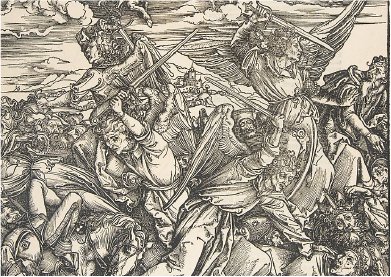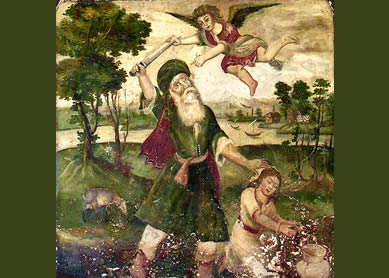While the Bible inspires many to peaceful ethics and actions, violent extremists have likewise found their identity, motivation, and legitimation in the Bible. As a rich and varied trove of images subject to competing interpretations, the Bible contains many examples that have inspired violent extremism, lending authority to the leaders of violent groups, forming a basis of shared culture and identity among extremists, and/or supplying justifications for extremist ideologies.
According to the U.S. Federal Bureau of Investigations, violent extremism refers to “beliefs that encourage, condone, justify, or support terrorism,” with terrorism being defined as violence aimed at property or bystanders for the purpose of influencing another audience in furtherance of ideological, political, and/or religious goals. Like other texts, such as the U.S. Constitution, Qur’an, or Mahabharata, the Bible is a favorite in extremist circles because of the influence that it holds in the parent religions from which extremist offshoots trace their lineage. This is the case even though the parent religions may well reject the extremists’ violent interpretations of the texts.
What biblical text has been exploited the most by violent extremists?
Extremists draw on a wide variety of biblical texts, but the Christian book of Revelation seems to be the favorite. Since the Middle Ages, violent parties have viewed themselves as the righteous elect from Revelation, the “saints,” who are persecuted for their faith in Christ (e.g., Rev 13:7). In the original text only divine armies fight back on behalf of the righteous; in violent extremism, however, the role of the avenging angels is enacted by the violent group itself, whether that group be American Christian Identity extremists propagating white supremacy, the United Nuwaubian Nation of Moors promoting black supremacy, the Norwegian neo-Templar terrorist Anders Behring Breivik murdering European liberals to defend European identity, the Lord’s Resistance Army of captured children forced to become soldiers, or the Japanese terrorist movement Aum Shinrikyo, which attempted to catalyze Armageddon / World War III by releasing sarin gas on the Tokyo subway in 1995.
What other texts, in addition to Revelation, have inspired violent extremists?
A wide variety of other biblical texts have also inspired extremists. For example, the name of the Phineas Priesthood, a concept among white supremacy groups, takes its inspiration from Num 25:6. In Numbers, Aaron’s son Phineas impales an Israelite man and Moabite woman in the act of sex. In Christian Identity literature, Phineas becomes a model for those who feel called to murder “race mixers,” or those engaged in interracial dating or marriages.
In a similar vein, other biblical figures who committed violence in the name of God serve as inspiration for violent extremists, who often take the biblical text out of context. For instance, the domestic terrorist group the Covenant, Sword, and Arm of the Lord (CSA), active from 1976–1985, named their land in Arkansas “Zarephath-Horeb.” This name combines the location of Elijah’s home before he slayed 450 pagan prophets (1Kgs 18:40) with the name of the mountain to which Moses fled after he murdered an Egyptian out of anger (Exod 2:11-15). Extremists typically consider the historical context of the text to be mostly irrelevant, instead seeing their own circumstances as the fulfillment of the text. Thus, group after group throughout history project themselves onto the figures of the biblical narratives.
Bibliography
- Schirch, Lisa. The Ecology of Violent Extremism: Perspectives on Peacebuilding and Human Security. London: Rowman & Littlefield, 2018.
- Flannery, Frances. Understanding Apocalyptic Terrorism: Countering the Terrorist Mindset. New York: Routledge, 2015.
- Collins, John J. What are Biblical Values? What the Bible Says on Key Ethical Issues. New Haven, CT: Yale University Press, 2019.



